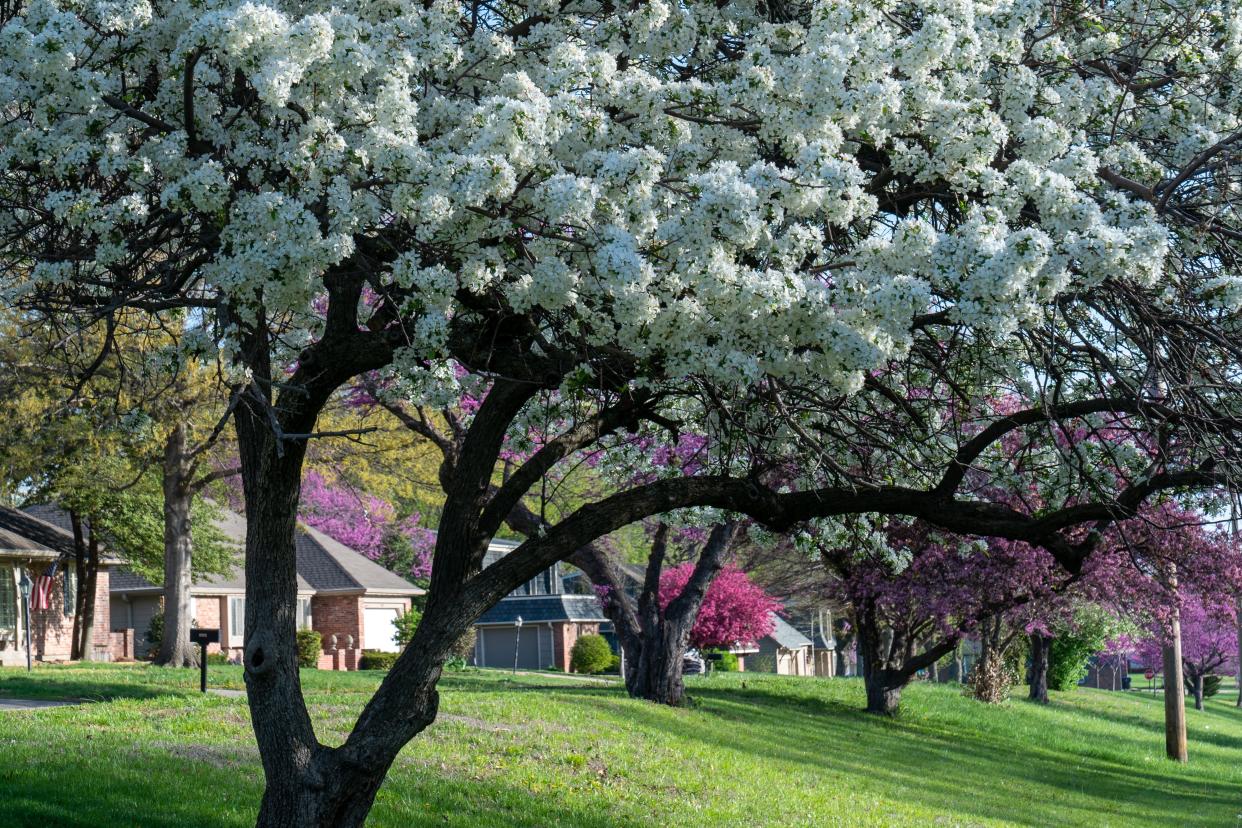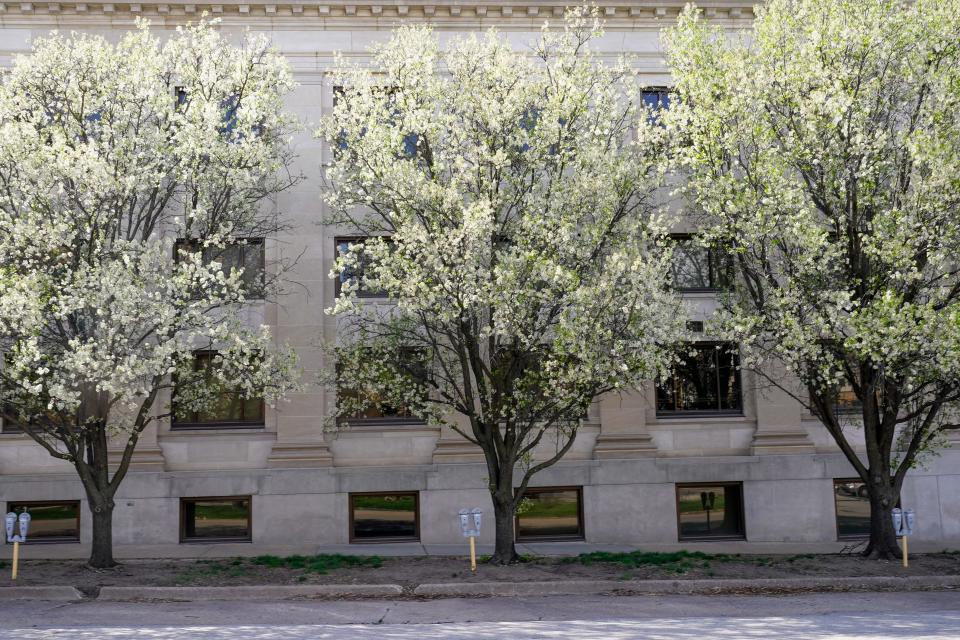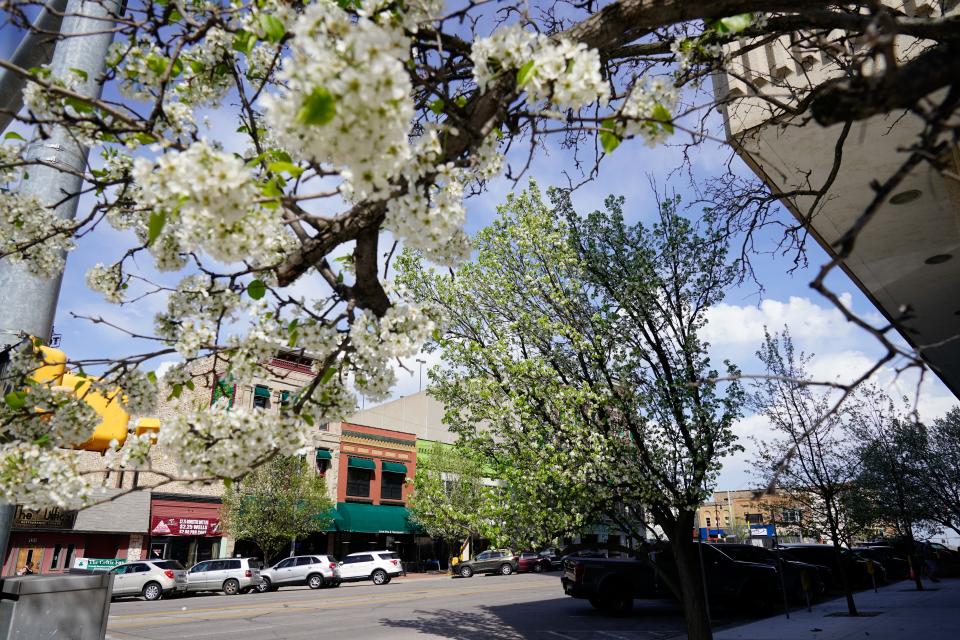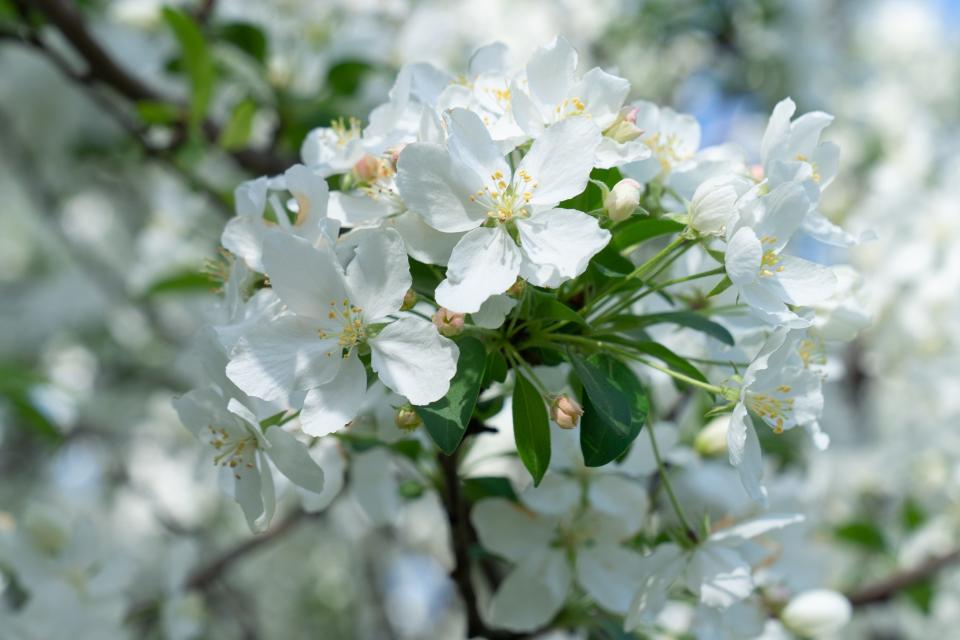Bradford pear trees dot eastern Kansas. Here's why environmentalists want them eradicated.

For decades, the stately looking, white-flowered Bradford pear tree had a good reputation.
One Topeka-area service organization celebrated Arbor Day in 2011 by planting a Bradford pear.
But things have since changed so much that Evergy, the Kansas Forest Service and Shawnee County Parks and Recreation now all support eradicating this area's Callery pear trees, of which Bradford pears are a part.
Why do people want to kill Bradford pear trees in the Topeka area?
Organizers say the invasive, fast-spreading Callery pears wreak havoc upon the environment by killing native trees, plants and grasses that provide food for birds, butterflies and other wildlife.
Everyone benefits when Bradford pear trees are killed, USA Today was told by South Carolina landscape designer and contractor Durant Ashmore.
Killing Bradford pears is also supported by Evergy, which frequently partners with groups focused on sustainability, education and environmental communication in communities it serves, said Gina Penzig, a spokeswoman for that electric utility.
"The Callery pear replacement campaign aims to replace invasive species trees with native species trees in the communities we serve, as well as provide environmental education," she said. "Planting native trees is better for our communities because the trees adapt to local weather and wildlife, use less water, provide habitat and food for native wildlife and have a long lifespan."
Evergy, Kansas Forest Service and Shawnee County Parks and Recreation are teaming up with DeepRoots KC to offer a giveaway Saturday as part of a Callery pear eradication campaign that Kansas City, Mo.-based group has set up.
They plan to hand out 100 native trees, which were bought by Evergy, to residents who can show that they killed a Callery pear tree in the Topeka area.
What is a Callery pear tree?

Callery pear trees are native to Asia and can be found in most U.S. states.
All Bradford pear trees are Callery pears, but not all Callery pears are Bradford pears.
Bradford pear trees were introduced by the United States Department of Agriculture as ornamental landscape trees in the mid-1960s.
First Lady Claudia "Lady Bird" Johnson promoted the Bradford pear in 1966 by planting one in downtown Washington, D.C.
Bradford pears were bred as "city trees," and have been used to adorn urban and suburban yards, said Ariel Whitely-Noll, communications director for the Kansas Forest Service.
Bradford pear trees display beautiful white flowers, which "smell horrible," Whitely-Noll said.
Why do people not like Callery pear trees?

Callery pears proved popular with landscapers because they were inexpensive, transported well and grew quickly.
Kansas property owners liked the trees, in part because they held up well under tough Kansas weather, including drought conditions, Whitely-Noll said.
But Bradford pear blooms stink when they appear in the early spring, which some people don't like.
Those blooms "smell like decaying fish … at best!" said the website of DeepRoots KC.
In addition, Callery pear tree branches tend to break easily in high winds, with Bradford pears rarely lasting more than 20 years.
Growers responded by introducing other varieties of Callery pears, including Cleveland Select, which live about 25 years.
Callery pear trees have 'little to no value to wildlife'
Critics say the worst thing about Callery pears is they way they spread to kill native trees, plants and grasses — and consequently, wildlife that depend on those.
Callery pears "have little to no value to wildlife, and displace native trees," USA Today was told by Steven Long, assistant director of the department of plant industry at Clemson University in South Carolina.
A Callery pear can grow to 30 feet tall, with the "dead zone" beneath its dense canopy keeping light from reaching other plants.
Because they bloom earlier in the spring, from March to mid-April, Callery pears also overtake resources from surrounding native species.

Meanwhile, Callery pears have increasingly gotten out into rural areas.
Though Bradford pears don't reproduce among themselves, they cross pollinate with every other pear tree, creating offspring that produces thorns capable of puncturing vehicle tires.
"For many of the same reasons Callery pear was valued in the landscape as a tough tree, it is now proving difficult to eradicate as it spreads into areas where it is an unwanted disrupter and displacer of native and/or desirable vegetation," says the Kansas Forest Service website.
That site features a map showing where Callery pear trees can be found in the U.S., including roughly the eastern half of Kansas.
The map shows Callery pears are present in roughly half the counties in Ohio, which earlier this year became the first state in the U.S. to ban the planting, growing and sale of Bradford pear trees.
Bans are to take effect next year in South Carolina and Pennsylvania.
Attempts to ban Bradford pears have proven unsuccessful in Indiana, where growers make millions each year selling them.
How can I acquire a native tree to replace my Bradford pear?
Those who hope to take advantage of Saturday's giveaway are asked to remove their Callery pear tree completely by cutting it out at the stump, then treating what remains with a "stump remover" chemical spray, Whitely-Noll said.
"You can also grind the stump out," she said.
Those who wish to take part must additionally:
• Register at Topeka Eventbrite to receive a free, native tree to replace their Callery pear.
• Take a photo of the downed tree, with a person in the photo, if possible.
• Email the photo to hello@deeprootskc.org.
• Show up between 10 a.m. and 1 p.m. Saturday at the Gage Park Maintenance Compound, 4320 S.W. 10th, where the replacement trees will be given away.
Native tree species available Saturday will include the redbud, shadblow serviceberry, American smoketree, swamp white oak, bur oak or mossycup oak, fragrant sumac and bald cypress.
Similar giveaways are being held Saturday at Lee's Summit, Mo., and May 20 at Lenexa, according to the website for DeepRootsKC.
Contact Tim Hrenchir at threnchir@gannett.com or 785-213-5934.
This article originally appeared on Topeka Capital-Journal: Giveaway part of effort to eradicate Bradford pear trees in NE Kansas

